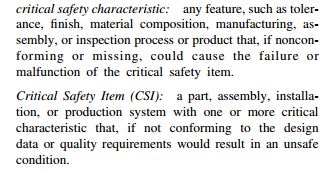Tom F.
Mechanical
- Feb 27, 2019
- 3
Greeting! There is currently a rather heated discussion between the Design Team and the Quality Inspectors in my company about complex feature callouts that are critical to function. For this example, I am going to use a counterbore hole feature. We use the diamond symbol (♦) to denote critical to function features on our drawings. The design team posits that the entire hole callout should be treated as a single feature and thus requiring a single diamond symbol. The Quality Team is saying that there are 3 different features that make up the hole and if they are all critical to function then they all should have separate diamond symbols.
My question for the community here is, how does your company deal with this type of situation? Also is there any standard governing this?
Thank you.
Tom F.
Rochester, NY
My question for the community here is, how does your company deal with this type of situation? Also is there any standard governing this?
Thank you.
Tom F.
Rochester, NY




